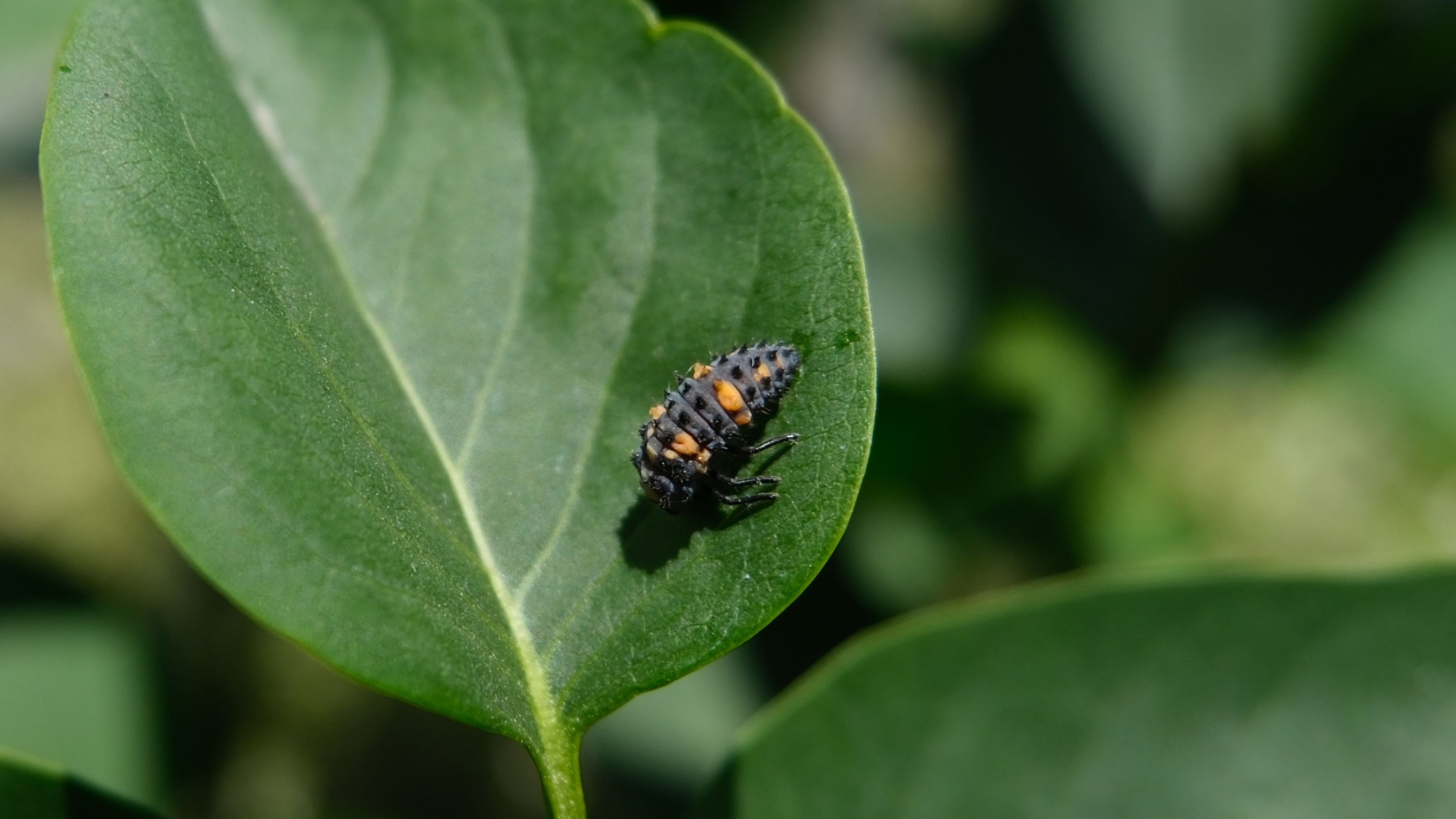Many of the most valuable garden helpers in the Bay Area are insects and arthropods that work hard behind the scenes to protect your plants, pollinate your flowers, and maintain healthy soil. Whether you’re growing ornamentals, vegetables, or California natives, supporting beneficial insects is one of the smartest and most sustainable ways to create a thriving garden.
While you’re probably aware of the beneficial nature of butterflies and birds, here are some of the more unusual insect allies you’ll want to welcome into your Bay Area garden:
🐞 Ladybugs (Ladybird Beetles) & Larvae
These charming red-and-black beetles are famous for their appetite—but you may not be as familiar with their larvae. A single ladybug larva can eat 400+ aphids during its development. Adults continue to snack on aphids, scale insects, and whiteflies.
Attract them with: California Poppy (Eschscholzia californica), California Lilac (Ceanothus spp.), and Coyote Mint (Monardella villosa) are excellent choices. Other beneficial natives include Yarrow (Achillea millefolium), and various native milkweeds. Also try letting some aphids be (yes, really!) to give them a reason to stay.
🕷️ Spiders
Although they get a bad rap, spiders are natural pest controllers. They prey on mosquitoes, flies, beetles, and even garden caterpillars. Most are non-aggressive and stay hidden, but their impact is huge.
Support them with: Mulch, leaf litter, rock piles, and native shrubs that give them places to live.
🐝 Native Bees (Like Bombus californicus)
The Bay Area is home to hundreds of species of native bees, many of which are solitary and far more efficient than European honeybees at pollinating certain crops and natives.
Encourage them with: California Poppy (Eschscholzia californica), California Lilac (Ceanothus spp.), lupine, California Buckwheat (Eriogonum), and other native plants; and leaving bare patches of soil for nesting.
🦟 Hoverflies (Syrphid Flies)
These bee mimics are often mistaken for wasps or bees, but they don’t sting—and their larvae are voracious aphid-eaters. Adults are excellent pollinators, too.
Invite them with: Yarrow (Achillea millefolium), California Buckwheat (Eriogonum), California Poppy (Eschscholzia californica), Lacy Phacelia (Phacelia tanacetifolia), asters and daisies. Hoverflies also love a shallow dish filled with water and rocks (so they don’t drown!).
🪲 Ground Beetles
Most ground beetles are nocturnal predators that eat slugs, caterpillars, cutworms, and other pests. They live in soil and leaf litter.
Attract them with: Mulched beds, low-growing plants, and avoiding tilling or disturbing the soil too often.
🕸️ Lacewings
Delicate-looking as adults, lacewings lay eggs that hatch into fierce-looking larvae often called “aphid lions.” These larvae feed on aphids, mites, and even small caterpillars.
Plant for them: California fuchsia (Epilobium canum), Milkweed (Asclepias speciosa), Toyon (Heteromeles arbutifolia), and Black sage (Salvia mellifera). Avoid using pesticides, which can kill them.
🐝 Parasitic Wasps
Tiny but mighty, these wasps lay their eggs inside pest insects like tomato hornworms, aphids, or whiteflies. The developing wasp larva kills the host—naturally reducing your pest population.
Encourage them with: Umbel flowers like parsley, yarrow, and Queen Anne’s lace.
🪲 Rove Beetles
Slim, fast-moving beetles that prey on small soft-bodied insects, mites, and even slug eggs. They’re like security guards for your compost and mulch.
Found in: Compost piles, mulch beds, and damp garden nooks.
🌼 Final Tips: How to Support Beneficial Insects
Ditch the pesticides. Even “organic” sprays can harm beneficial bugs.
Plant a variety of flowers. Aim for flowers in many different shapes and bloom times.
Leave some mess. Leaf litter, small rock piles, and standing stems give allies shelter and nesting spots.
Add a water source. A shallow dish with pebbles or a small birdbath helps thirsty pollinators stay hydrated.
By embracing these unsung heroes of the garden, you’re not just reducing your pest problems—you’re supporting an entire ecosystem. A garden teeming with life is a healthy garden, and beneficial insects are some of your very best friends.

